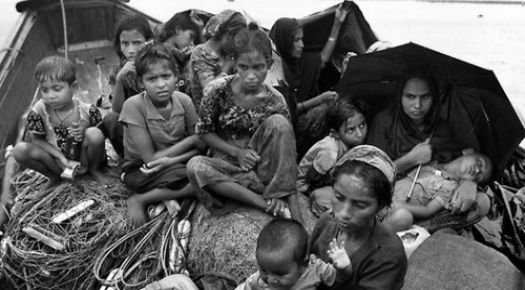
In the last two years, more than 100,000 Muslims have been forced to leave their homes in Myanmar, in fear of angry assailants and rancorous mobs. While some have moved into secluded makeshift camps, others have trekked across the border to neighbouring countries like Malaysia, Thailand and Bangladesh in search of a safe home and a steady source of income. Hundreds have been killed and thousands detained.
These Muslims happen to be the Rohingyas, an ethnic group that the United Nations claims is one of the most persecuted minorities in the world. Approximately 1.3 million Rohingyas live in Myanmar, most of them in Rakhine state, also known as Arakan. Since 2012 spring, the Buddhist extremists in the country have been on a mission to drive out this Muslim community, often using brutal violence and ruthless tactics against them.
The elected government headed by President Thein Sein may have condemned the violence against the Rohingyas, but Sein has also gone on record to say they are not citizens of Myanmar and must be placed in refugee camps under the UN before being moved to countries that are willing to have them.
In 1982, Myanmar passed a law that restricted citizenship to members of the country’s national races, a segregation that excludes Rohingyas, depriving them of several essential rights including right to travel, work, marry and have children without permission from local authorities.
While the community claims to have roots in western Myanmar and say they have lived there for centuries, Buddhist extremists in the region accuse them of having emigrated unlawfully from Bangladesh during British colonization. The local authorities in Arakan, Myanmar government as well as Buddhist radicals associated with the 969 Movement often use this excuse to say the Rohingyas should leave Myanmar. They cite feeling threatened by the Rohingya’s growing numbers, saying the community is conspiring to take over a Buddhist-majority country but that is an unreasonable argument because as admitted by themselves and substantiated by the UN, 89 percent of Myanmar’s population comprises of Buddhists while only 4 percent happen to be Muslims.
Tensions between Buddhists and Rohingyas have a longstanding history with the two communities having lashed out each other for the first time during World War II when the former sided with Japanese invaders and the latter sided with Myanmar’s colonial rulers. Since then, Muslim homes have been razed and destroyed and Muslim people have been beaten and torched on several occasions.
Recently, violence between both communities seems to have stepped up again. Today, most Rohingyas have been forced into segregated camps that the U.N. refers to as appalling living conditions. These camps have no access to basic facilities like water, sanitation, education or health-care and their humanitarian crisis deteriorated in March 2014 when local authorities drove out international aid organizations from the area, accusing them of favouring Rohingyas over Buddhists. The various provisions like food rations and medicines from these organizations that the camp inhabitants depend on disappeared instantaneously, compelling the persecuted minority to flee in unprecedented numbers to countries across the border.
During his visit to Asia in April this year, President Barack Obama explained to Myanmar that it would fail in its historic shift to democracy if it did not succeed in securing its Muslim minority.
Photo Credit: Tumblr
